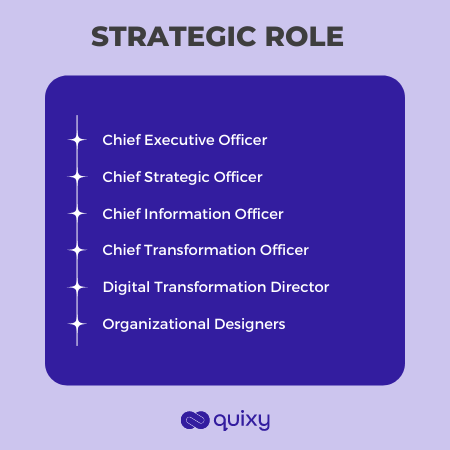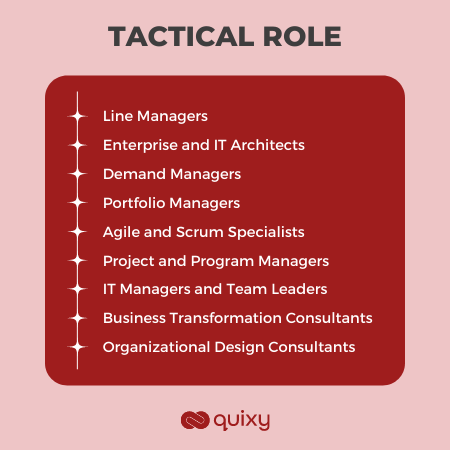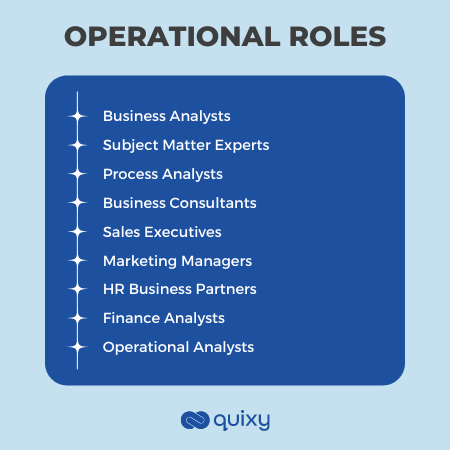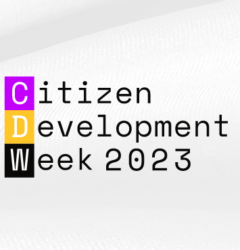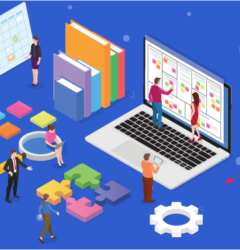
This article was first published on Nasscom Community.
Digital acceleration is a buzzword today because of the new technological trends such as cloud computing, mobile phones, and social media. There is an increased focus on delivering customer experiences and business agility through the use of digital tools and platforms. Users are encouraged to become citizen developers who can deliver products faster than traditional programming models. This can be done by using no-code technology and platforms that enable business users to build custom apps without requiring any coding knowledge.
But how can organizations create a conducive environment for citizen development?
This article explores the key steps organizations can take to become citizen development-friendly.
Step 1 – Demarcating the key roles to cover the entire gamut of citizen development
Citizen development requires coverage on a strategic level and tactical and operational levels. Fusion teams should be created in order to support enterprise innovations. The roles and responsibilities of citizen developers and technical people need to be demarcated.
i. Strategic Roles
These are citizen development champions having the experience and skill set of CxOs. This role requires someone who understands how citizens interact with technology. They need to know the requirements of citizen development and understand the challenges involved in developing software solutions. Appointing such people may require effort and time, but the benefits are great.
ii. Tactical Roles
Indeed, no-code platforms don’t require any coding skills. However, a certain section of your business users’ and programmers’ teams should have the technical and tactical understanding of no-code platforms, and know-how is still required. This can help you nurture individuals who can oversee applications built by citizen developers. To successfully carry out integrations with third-party solutions, your technical staff should understand the nitty-gritty of no-code applications. These individuals can also provide relevant guidance to programmers and citizen developers.
iii. Operational Roles
To some extent, operational roles and responsibilities are primarily held by citizen developers and also by no-code masters. Depending on your organization’s functioning (centralized or decentralized), you may put citizen developers in one or more departments or business units.
When defining the scope of work for citizen developers, you will need to decide whether you will adopt the no-code approach to build departmental workflow apps or customer-facing apps. The primary role of citizen developers (business users) is not to build applications, and therefore, it’s essential to designate the minimum and the maximum number of citizen development hours.
Also read: Citizen Development Can Pave the Way For Agility. Here’s how!
Step 2 – Selecting business users who are the best fit for citizen development
Citizen development is an important part of modern software development because many manual tasks that used to be performed manually have now been automated. Examples include data entry into databases and the creation of spreadsheets. Therefore, people who excel as citizen developers are often sought after by businesses looking to automate some of their mundane back-office operations.
Citizen development doesn’t require any technical knowledge but requires some basic business skills. For example, if you are a citizen developer and want to create an application, you first need to know how to use visual tools (like drag & drop) and then learn what type of data your app collects. You also need to understand how to handle errors and validate user input. In addition, there may be other prerequisites depending on the platform you choose.
An ideal candidate must be an independent contributor without being a lone wolf. Citizen developers do not act independently but participate with others within the group to develop solutions while juggling different roles. Time management skills are therefore essential when working with citizen development groups.
Step 3 – Choosing the right no-code platform for citizen developers
You can follow these steps to choose the best possible no-code platform for your innovation goals.
i. Determine your focus goals
You can’t go overboard with no-code application development, and it is essential to have some focus goals. In this regard, choosing the right project is paramount.
For example –
- You may pick a workflow application you struggle with due to IT resource constraints.
- You can ask your team to identify paper-based business processes that require immediate automation.
Some of your focus goals can be:
- Respond to business needs faster
- Innovate and get ahead of competitors
- Reduce costs and syntax errors
- Speed-up reporting/feedback
- Speed up data collection
- Better utilization of IT resources
ii. Create a list of functionalities you want in your no-code application
Different no-code platforms support different sets of functionalities. Of course, you should select the one which covers the maximum ground. Here is a general list of functionalities that no-code platforms support, and you can map this list with your requirements.
- Reports
- In-app communication
- Form Builder
- Third-Party Integration
- Dashboards
- Audit Trials
- Device Responsive
- Role-Based Control
- Customizable tool
- Agile Process Management
- Push Notifications
iii. Create a list of integrations you want your application to support
Some applications exist within an ecosystem of other apps, systems, and devices and therefore require integration capabilities. For example, the application may require access to user contacts and the company’s financial data. You can refer to the below list of integrations. Based on your selection, you can zero in on a no-code platform.
- API
- REST API
- Online databases
- Excel
- Web Services
- CRM database
- ERP database
- E-Commerce
- SQL
- Google Analytics
iv. Address critical questions
When choosing from a list of prominent vendors, it all comes down to their value proposition. These questions will bring you more clarity in the context of no-code platforms.
- Does the platform operate in a genuinely no-code fashion, or is it essentially a low-code platform?
- Is the platform cloud-based?
- Can the platform keep a record of your most sensitive documents and transactions?
- What level of administration and maintenance does the no-code platform provide?
- Does the platform offer software development lifecycle (SDLC) controls and auditing capabilities?
- How secure is the platform?
- What are the initial and follow-up costs of using the platform?

Step 4 – Imparting training to citizen developers
No-code platforms are designed to simplify application development. Non-IT professionals can develop software applications without needing a background in programming. These platforms allow businesses to create custom apps quickly. However, there is still a significant learning curve for citizen developers who want to use these no-code tools. Frequent education and training need to be imparted as new features continue to enhance these platforms.
To seamlessly collaborate with IT, you need a no-code platform and a common language to communicate. Yes, citizen developers don’t need to learn to code, but they need to understand the nitty-gritty of software development life cycle and agile methodologies, prototyping, wireframing, and design thinking.
Citizen developers should also be briefed on relevant data lists and connected systems. It’s ideal for them to take multiple before gaining access to a no-code platform. You can ensure cross-functional learning opportunities for citizen developers in workshops, hackathons, and community events.
Also read: How to Implement and Govern Citizen Development in your Organization
Conclusion
Citizen Development requires an agile approach where new technologies and skillsets are adopted quickly and iteratively. Your governance should be flexible enough to adapt as requirements change. The above-mentioned steps will help you streamline the humongous task of rolling out citizen development.
Subscribe
Login
Please login to comment
0 Comments
Oldest
